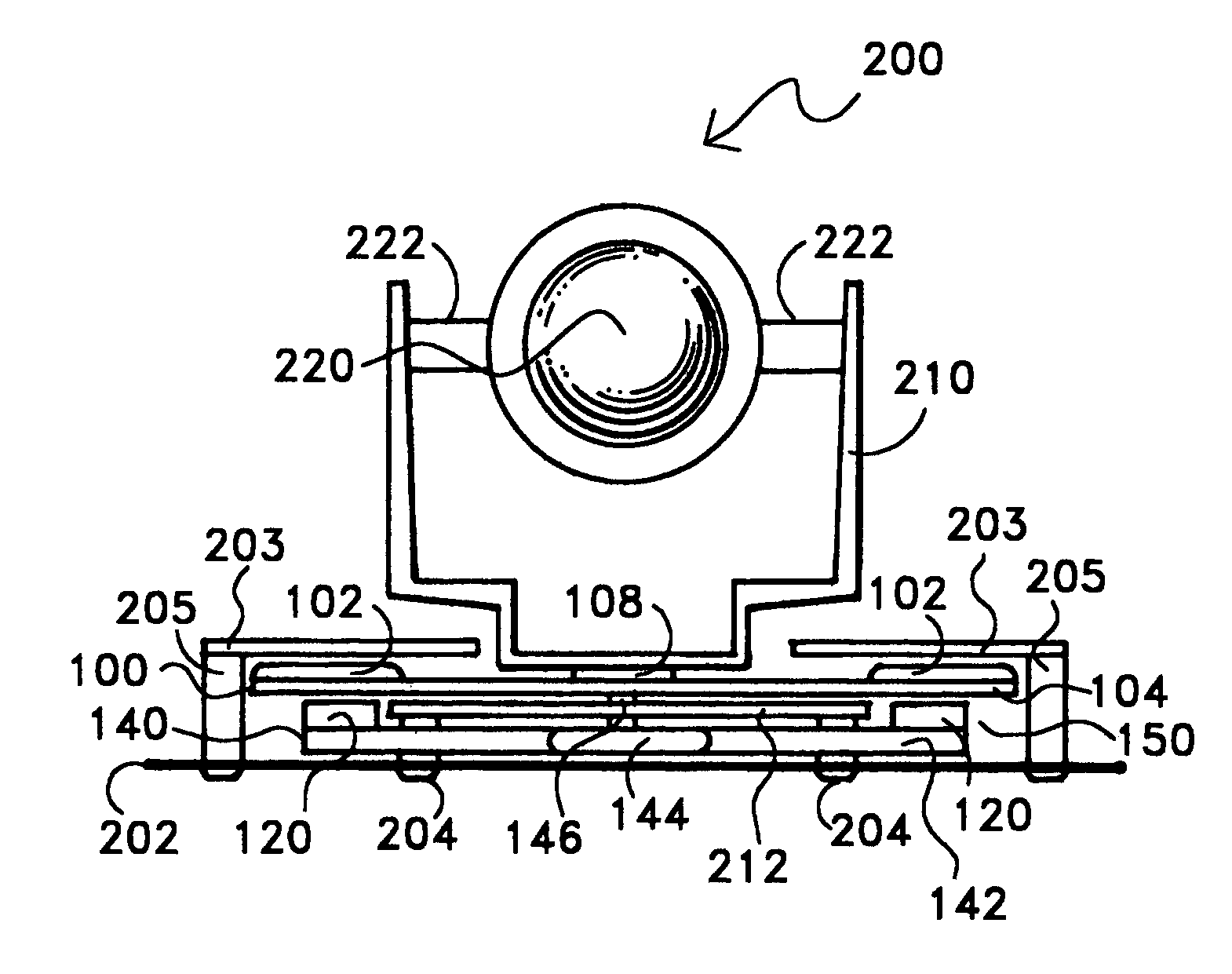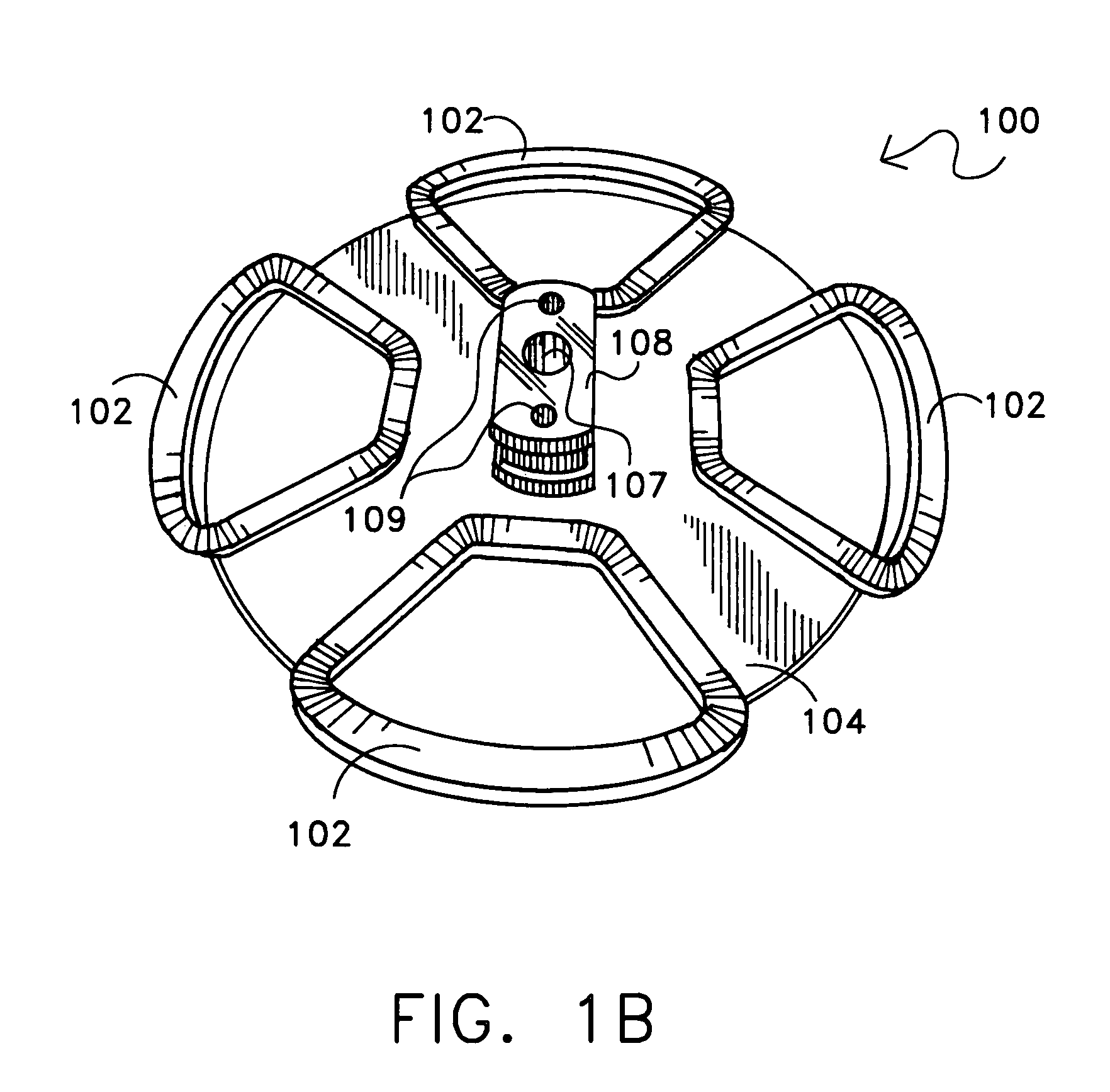Electromagnetic circuit and servo mechanism for articulated cameras
a technology of servo mechanism and electromagnetic circuit, which is applied in the direction of magnetic circuit rotating parts, magnetic circuit shape/form/construction, instruments, etc., can solve the problems of minute interruption of video output from the camera, reduce assembly cost, reduce or substantially eliminate interruptions or jumpiness, and increase assembly cost
- Summary
- Abstract
- Description
- Claims
- Application Information
AI Technical Summary
Benefits of technology
Problems solved by technology
Method used
Image
Examples
Embodiment Construction
[0031]FIG. 1A illustrates one exemplary embodiment of a multiple coil assembly 100 having four motor coils 102 that are integrated within or otherwise fixedly coupled to a coil support assembly in the form of a circular coil support platter 104. As shown in FIG. 1A, coil support platter 104 may include a rotation point in the form of a central opening 106 for receiving a spindle mechanism in the form of a shaft with or on which coil support platter 104 may rotate in a manner such that rotational motion may be imparted to a drive member (e.g., drive bracket, etc.) by the coil assembly 100. Although an opening 106 is illustrated in FIG. 1A, it will be understood that any other suitable rotation point configuration (e.g., solid platter with more than one attachment point / s for a spindle assembly, etc) may be employed for rotatably coupling a coil support platter to a spindle mechanism that is suitable for allowing a coil assembly to rotate and to transfer rotational motion to a drive m...
PUM
 Login to View More
Login to View More Abstract
Description
Claims
Application Information
 Login to View More
Login to View More - R&D
- Intellectual Property
- Life Sciences
- Materials
- Tech Scout
- Unparalleled Data Quality
- Higher Quality Content
- 60% Fewer Hallucinations
Browse by: Latest US Patents, China's latest patents, Technical Efficacy Thesaurus, Application Domain, Technology Topic, Popular Technical Reports.
© 2025 PatSnap. All rights reserved.Legal|Privacy policy|Modern Slavery Act Transparency Statement|Sitemap|About US| Contact US: help@patsnap.com



